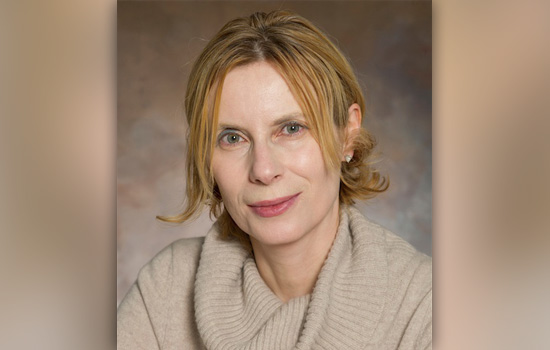Professor speaks at astrophysics symposium
Manuela Campanelli among leading scientists at event
Manuela Campanelli
Rochester Institute of Technology was represented at a symposium celebrating 50 years of relativistic astrophysics and research exploring quasars, black holes, exploding stars and colliding galaxies using Albert Einstein’s Theory of General Relativity.
Manuela Campanelli, director of RIT’s Center for Computational Relativity and Gravitation, spoke at the 27th Texas Symposium on Relativistic Astrophysics, held at the University of Texas at Dallas Dec. 8–13. She joined other leading scientists in the field, including Noble prizewinners Joseph Taylor, from Princeton University, and Steven Weinberg, from the University of Texas at Austin.
Campanelli gave an invited plenary talk on numerical relativity, a subfield of general relativity that uses numerical techniques and supercomputers to simulate the dynamics and radiation of supermassive black holes, neutron stars, and other phenomena governed by Einstein’s Theory of General Relativity. Two RIT Ph.D. students in the astrophysical sciences and technology program, Dennis Bowen and Brennan Ireland, who work with Campanelli, also presented their research.
Campanelli and Carlos Lousto—fellows of the American Physical Society and founding members of RIT’s Center for Computational Relativity and Gravitation—and Yosef Zlochower are known for, in 2005, simulating one of the first mergers of two black holes on a supercomputer while at the University of Texas at Brownsville. Their method solved the interrelated equations for strong field gravity that comprise Einstein’s Theory of General Relativity, connecting matter, space and time.
The team is now on the faculty in the RIT College of Science, with appointments in the School of Mathematical Sciences and the School of Physics and Astronomy. Their research at RIT’s Center for Computational Relativity and Gravitation merges extreme black holes and is supported by a recent $525,000 grant from the National Science Foundation.
Simulations of black holes colliding—and the gravitational waves they produced upon impact—will be the blueprints for detecting actual gravity waves and verifying Einstein’s theory of general relativity—an event that could occur within the decade.













